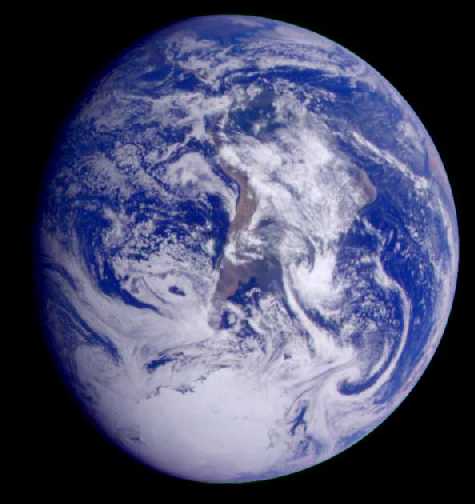Gaia
Gaia, which is a concept identified with the planet Earth (all of its
living creatures and environment) is the biggest known demonstration of life.
Gaia is the entity that represents the union between the rocks, the air, the
oceans and the living organisms. The key-elements that characterize Gaia are:
- The living organisms that exploit the
opportunities that the environment gives them, subjected to the law of natural
selection of Darwin (there can only survive the species that achieve the success
of leaving a larger lineage);
- The influence of these organisms over the
surrounding physical and chemical environment and the existence of
physical barriers to their survival (temperature, saltiness, acidity,
etc).
The Planet of the Daisies
The way the organisms can affect the environment aiming its equilibrium
condition is demonstrated by the model of "the planet of the daisies"
postulated by James Lovelock, the master of the theory of Gaia.
Let’s suppose that the 3 only living species of a planet are white
daisies, grey (neutral colour) daisies and black daisies. When the planet
becomes colder than the ideal, the black daisies thrive more than the white or
grey daisies, because the colour gives them a better capability for absorbing
the heat. The planet becomes darker because it covers itself with a flora that
is predominantly dark. For that reason it becomes hotter. On the other hand, if
the planetary temperature is higher than the ideal, then the white daisies,
with a better capability for irradiating the heat and preserve themselves
cooler, will get advantage over the other species. The planet will become
lighter and, therefore, it will become colder. If the temperature is close to
the ideal, the grey daisies would have advantage over the others, because they
wouldn’t need to expend any energy in the production of the white or black
pigments. If some significative regulation of the temperature was necessary (if
the planet was colder or hotter), this advantage would, nevertheless, lose its
relevance.
We can add two populations to the 3 daisies’ species: rabbits and foxes.
When the number of rabbits increases, the number of daisies decreases (they are
eaten by the rabbits), but if the daises became exhausted, the population of
rabbits would die from starvation. It is, therefore, necessary to reach an
equilibrium at which the number of daisies is exactly enough for feeding the
population of rabbits. The same logic is applied to the relation between the
populations of rabbits and foxes (the foxes eat the rabbits).
It can be demonstrated that the higher is the variety of species, the
higher will be the stability of the system, even following occasional
disturbances (like the fall of a meteorite). When the heating of the star
provokes the rise of the “inorganic” temperature (under conditions of
hypothetical absence of life) up to the limits that are bearable by the
organisms, a smaller variety of living beings will populate it (for instance,
only the white daisies species) and, therefore, the system will become
unstable, subjected to strong fluctuations.
The presence of oxygen in the atmosphere is also a good reflex of the
theory of Gaia: The expansion of the forests (producers of this gas) will drive
up the percentage of produced oxygen. However, if this percentage was higher
than 25%, the forests would completely burn (because the oxygen is a comburent)
and, therefore, the quantity of produced oxygen would decrease until an
equilibrium would be reached.
On the other hand, the reactions between the free oxygen and other
elements like carbon or sulphur release acid substances into the air, which
favours the erosion of the rocks of the crust in order to release more
nutrients. That would allow that these nutrients could benefit a bigger
ecosystem, provoking a rise in the total quantity of organisms that would feed
from them, like the photo-synthesizers (producers of oxygen, as the plants, for
instance). The growth on the quantity of these organisms causes an increase on
the proportion of oxygen that, just as the acids and nutrients, becomes
poisonous when it exists in excess. This excess limits, therefore, the number
of organisms producers of oxygen and so, an equilibrium is reached - the oxygen
composes nowadays 21% of the total atmospheric volume.
Conclusion
Summarizing, we can state that Gaia is a living system that, under its
multiple facets, is auto-regulated.

A living being the size
of the world (NASA - USGS)
_